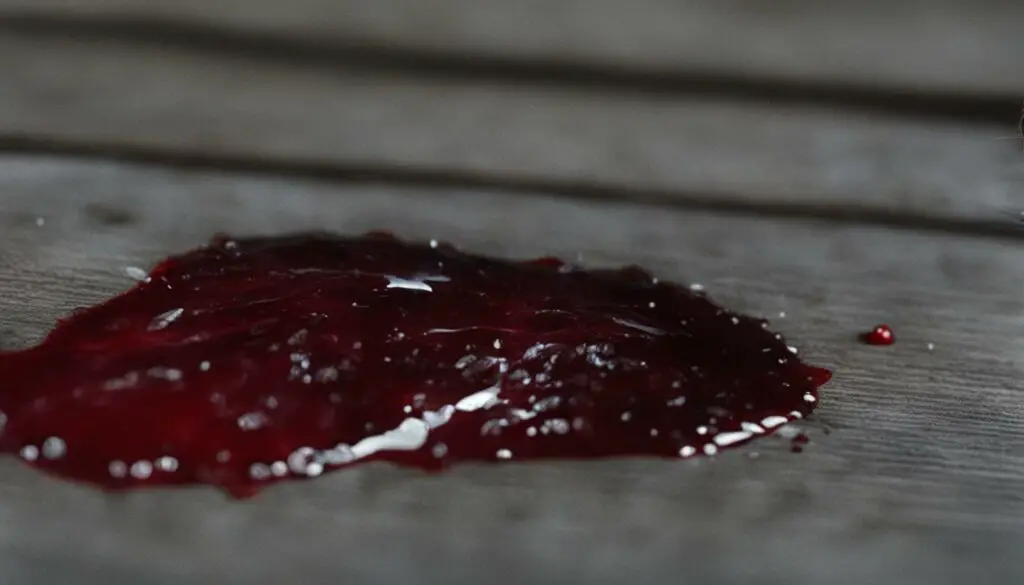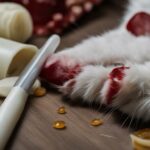When a cat rips out a claw, it can be a painful and scary experience. As a cat owner, I understand the concern and want to provide you with the necessary information to help your feline friend heal and prevent future injuries.
In this article, I will guide you through the steps to treat a ripped cat claw and ensure proper care for your cat’s well-being. From understanding claw injuries and their potential complications to providing first aid at home and seeking veterinary care when necessary, we will cover all aspects of helping your cat through this challenging situation. Let’s dive in!
Key Takeaways:
- When a cat rips out a claw, it can be painful and distressing.
- Understanding claw injuries and their causes is essential for effective treatment.
- Providing immediate first aid at home can help alleviate your cat’s pain.
- Seek veterinary care in severe cases or if signs of infection are present.
- Preventing future claw injuries through regular nail trimming and a safe environment is crucial.
Understanding Claw Injuries in Cats
Cats can be prone to claw injuries, which can cause intense pain and discomfort. Understanding how these injuries occur and their potential complications is crucial for providing the best care for your feline friend. Claw injuries in cats can occur due to various reasons, such as getting their claws caught in carpet or furniture, or during jumps and falls. These injuries can result in torn or damaged claws, causing limping, inactivity, and even litterbox issues.
When a cat injures its claw, it’s important to be aware of the signs and symptoms to provide timely treatment. Cats may exhibit limping, excessive licking or biting of the affected paw, or may even refuse to put weight on the injured leg. Visible signs of a claw injury can include bleeding, swelling, or a visible tear in the claw. If you notice any of these symptoms, it’s essential to take immediate action to alleviate your cat’s pain and prevent further complications.
Potential Complications of Claw Injuries
Without proper treatment, claw injuries in cats can lead to various complications. One common complication is the development of infections. If the torn claw is not properly cleaned and protected, bacteria can enter the wound and cause an infection. Infections can lead to further pain, inflammation, and even more severe health issues if left untreated. Another potential complication is the misalignment or regrowth of the nail. Improper healing may result in a crooked or misshapen nail, which can cause discomfort and difficulty for your cat when walking or using the litterbox.
To ensure the best outcome for your cat, it’s important to understand the causes and consequences of claw injuries. By recognizing the signs of a claw injury and promptly seeking appropriate treatment, you can help your cat heal and prevent further complications. In the next section, we will delve into how to provide first aid for a torn cat claw at home.
| Causes of Claw Injuries | Complications of Claw Injuries |
|---|---|
| – Getting claws caught in carpet or furniture | – Infections |
| – Jumps or falls | – Misalignment or regrowth of the nail |
Note: The table above highlights the common causes and potential complications of claw injuries in cats. Understanding these factors can help you take proactive measures to prevent injuries and ensure timely treatment.
Treating a Torn Cat Claw at Home
If you notice that your cat has torn a claw, it’s important to provide immediate first aid to alleviate their pain and prevent further complications. Here are the steps you can take at home to treat a torn cat claw:
- Safely restrain your cat: Begin by gently restraining your cat to prevent any further injury or escape during the treatment process. Use a towel or blanket to wrap them securely, ensuring their claws are not free to scratch.
- Control bleeding: Apply gentle pressure to the affected area with a clean cloth or gauze pad to control any bleeding. If the bleeding persists or is severe, seek veterinary assistance.
- Remove the damaged part of the nail: Using sterile nail clippers or scissors, carefully trim away the damaged part of the torn claw. Be cautious not to cut into the sensitive quick, which contains blood vessels and nerves.
- Protect the nail bed: Clean the wound with a mild antiseptic solution and apply a pet-safe antibiotic ointment to prevent infection. Then, cover the area with a clean bandage or use a cat-sized medical boot to protect the nail bed as it heals.
Remember, even with proper first aid, it’s crucial to monitor your cat’s condition closely. If you notice any signs of infection, such as redness, swelling, or discharge, or if your cat appears to be in significant pain, consult a veterinarian for further guidance and treatment.

Table: Common Signs of Claw Infection
| Signs of Claw Infection | Description |
|---|---|
| Redness and swelling | An inflamed appearance around the affected claw |
| Pain and sensitivity | Your cat may exhibit signs of discomfort and may avoid putting weight on the injured paw |
| Discharge | Pus or fluid may be present at the site of the infection |
| Limping or reluctance to walk | Due to the pain, your cat may exhibit a change in gait or avoid using the injured paw |
If you suspect your cat’s claw is infected, it’s crucial to seek veterinary care promptly. A veterinarian will be able to provide a proper diagnosis and prescribe appropriate treatment to ensure your cat’s swift recovery.
Seeking Veterinary Care for Claw Injuries
While many claw injuries in cats can be treated at home, there are certain situations where seeking veterinary care is essential. If the injury is severe, such as a deep tear or a fractured claw, it’s best to consult a veterinarian. They have the expertise to assess the extent of the injury and provide the necessary treatments.
In some cases, the nail may not be easily removable at home. This can happen if the claw is embedded in the skin or if there is significant damage to the surrounding tissue. A veterinarian can safely remove the nail, minimizing the risk of further complications.
Another reason to seek veterinary care is if there are signs of infection. Infections can occur when bacteria enter the wound, leading to redness, swelling, discharge, or continued pain. If you notice any of these symptoms, it’s important to have your cat examined by a veterinarian. They can prescribe antibiotics or other treatments to prevent the infection from spreading.
| When to Seek Veterinary Care? | Why? |
|---|---|
| If the injury is severe or the nail is not easily removable at home | Expert assessment and safe removal of the nail |
| If there are signs of infection, such as redness, swelling, discharge, or continued pain | Prescription of antibiotics or other treatments to prevent the infection from spreading |
Remember, your veterinarian is the best resource when it comes to the health and well-being of your cat. They can provide guidance, treatment, and support throughout your cat’s recovery process. So don’t hesitate to reach out to them if you have any concerns about your cat’s claw injury.
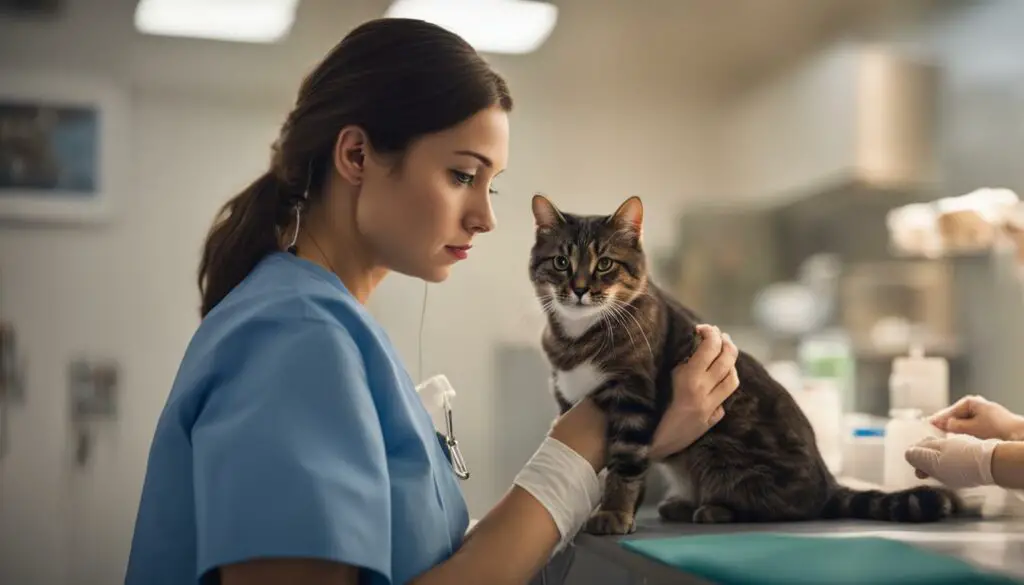
Preventing Future Claw Injuries
After dealing with a claw injury, it’s crucial to take steps to prevent future incidents. Regularly trimming your cat’s nails can help prevent them from becoming too long and prone to breaking. Additionally, providing appropriate scratching surfaces and keeping your cat’s environment safe can minimize the risk of claw injuries.
Trimming Your Cat’s Nails
Regularly trimming your cat’s nails is an essential part of preventive care. By keeping their nails at a proper length, you can reduce the likelihood of snagging or tearing. Use a specialized cat nail trimmer, and make sure to only trim the pointed tip of the nail, avoiding the quick, which is the sensitive part containing blood vessels and nerves.
If you’re unsure about how to trim your cat’s nails, consider seeking guidance from a professional groomer or a veterinarian. They can provide you with instructions and demonstrate the proper technique to ensure a safe and comfortable experience for both you and your cat.
Providing Appropriate Scratching Surfaces
Cats have a natural instinct to scratch, which helps keep their claws healthy and provides a form of exercise. To prevent claw injuries, it’s important to provide them with appropriate scratching surfaces.
Choose scratching posts or boards that are tall enough for your cat to fully stretch their body and sturdy enough to withstand their scratching behavior. Place these surfaces in areas where your cat spends the most time, such as near their favorite resting spots or close to their litter box.
It’s also helpful to encourage your cat to use these scratching surfaces by rewarding them with treats or praise when they engage in appropriate scratching behavior. Avoid punishing or scolding your cat for scratching furniture or other inappropriate surfaces, as this can lead to stress and anxiety.
Creating a Safe Environment
To minimize the risk of claw injuries, it’s important to create a safe environment for your cat. Remove or secure any potential hazards that could catch or trap their claws, such as loose carpets, exposed nails in furniture, or sharp objects.
Ensure that windows and balconies have secure screens or protective barriers to prevent falls, which can lead to significant claw injuries. Keep doors and windows closed to prevent your cat from venturing into unsafe areas outside. By providing a safe and secure environment, you can greatly reduce the chances of your cat experiencing a claw injury.
| Preventive Measures | Benefits |
|---|---|
| Regularly trimming your cat’s nails | Reduces the risk of nail breakage and tearing |
| Providing appropriate scratching surfaces | Allows cats to fulfill their natural scratching instinct |
| Creating a safe environment | Minimizes potential hazards and prevents falls or accidents |
Recognizing Signs of Claw Infection
After a cat has experienced a claw injury, it’s important to be vigilant and watch for any signs of infection. An infected claw can cause significant discomfort and may require prompt veterinary attention. Here are some key signs to look out for:
- Redness and Swelling: If the area around the injured claw appears red and swollen, it could indicate an infection.
- Discharge: Any discharge, such as pus or blood, coming from the injured claw or surrounding area may be a sign of infection.
- Continued Pain: If your cat continues to exhibit signs of pain or discomfort, even after some time has passed since the injury, it could be a sign that an infection has developed.
Table: Signs of Claw Infection
| Signs of Claw Infection | Description |
|---|---|
| Redness and Swelling | The area around the injured claw appears red and swollen. |
| Discharge | Pus or blood coming from the injured claw or surrounding area. |
| Continued Pain | Signs of pain or discomfort persisting even after a period of time. |
If you notice any of these signs, it’s crucial to consult a veterinarian for proper diagnosis and treatment. A vet will be able to determine if the claw is infected and recommend the appropriate course of action. Early intervention is essential to prevent the infection from spreading and causing further complications.
Recognizing and addressing claw infection early on can prevent the infection from spreading to other parts of the body and causing more serious health issues for your cat.”
Your cat’s comfort and well-being are of utmost importance, so don’t hesitate to seek veterinary advice if you suspect an infection. By staying vigilant and taking prompt action, you can help your feline friend heal and prevent potential complications.
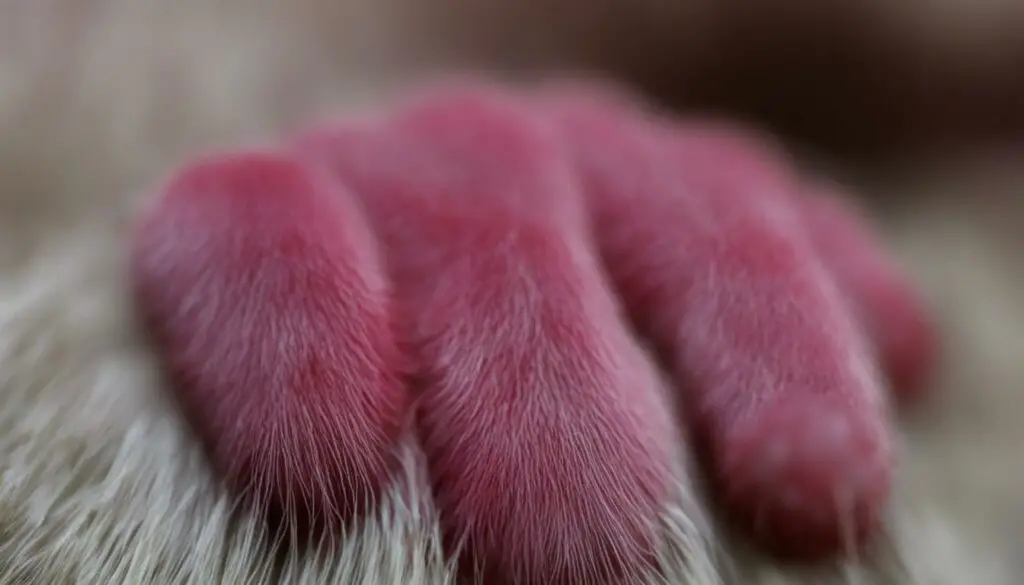
First Aid for Torn Cat Claws
When your cat experiences a torn claw, providing immediate first aid is crucial to alleviate their pain and prevent further complications. Here are the essential steps to take:
Step 1: Stop the Bleeding
Apply gentle pressure to the injured claw using a clean cloth or gauze pad. If the bleeding persists, you can use a styptic pencil, which contains a coagulant that helps stop bleeding. Alternatively, sprinkle a small amount of baking powder or flour onto the claw to aid in clotting.
Step 2: Clean the Wound
After the bleeding has stopped, it’s important to clean the wound to prevent infection. Gently wash the affected paw with warm water and mild antiseptic soap. Rinse thoroughly and pat dry with a clean towel or paper towel.
Step 3: Remove the Damaged Nail
Carefully inspect the torn claw and identify the damaged portion. Using clean, sharp nail clippers or scissors, trim off the loose or hanging part of the claw. Be cautious not to cut too close to the quick, which is the sensitive area of the nail.
Step 4: Protect the Nail Bed
After removing the damaged nail, apply a thin layer of antibiotic ointment or powder to the exposed nail bed. This helps prevent infection and promotes healing. You can cover the wound with a small, breathable bandage, securing it gently with adhesive tape or an elastic bandage.
Remember, providing first aid for a torn cat claw is only the initial step in the healing process. It’s important to monitor the wound closely for any signs of infection or complications. If you notice persistent swelling, discharge, or if your cat shows signs of continued pain, it’s essential to seek veterinary care for further evaluation and treatment.
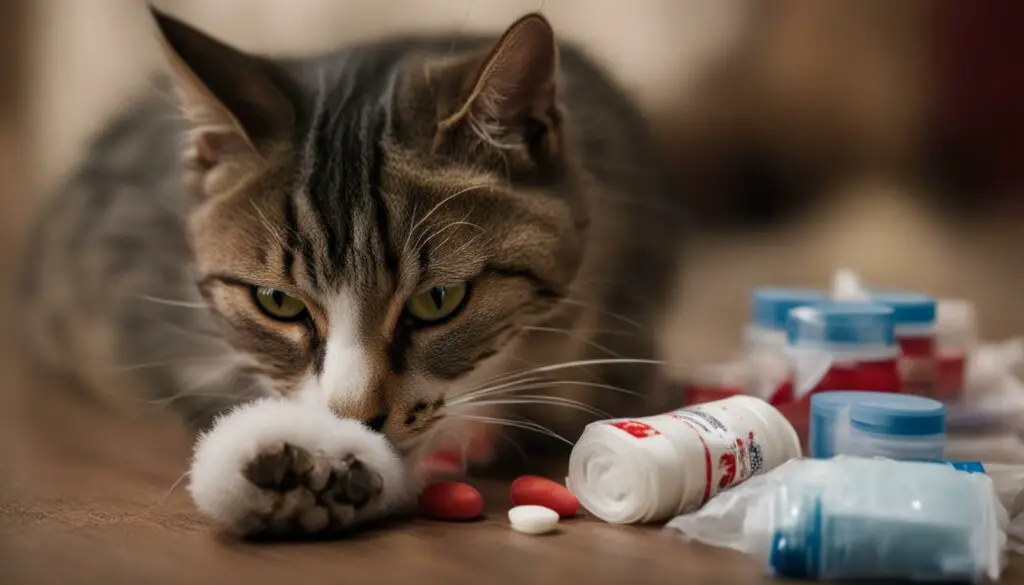
| First Aid for Torn Cat Claws | Steps |
|---|---|
| Stop the Bleeding | Apply gentle pressure, use a styptic pencil, or sprinkle baking powder or flour onto the claw to stop bleeding. |
| Clean the Wound | Gently wash the paw with warm water and mild antiseptic soap, then pat dry. |
| Remove the Damaged Nail | Trim off the loose or hanging part of the claw using clean, sharp nail clippers or scissors. |
| Protect the Nail Bed | Apply antibiotic ointment or powder to the exposed nail bed, then cover with a small, breathable bandage. |
Importance of Pain Management
When a cat tears out a claw, the exposed nail bed can be extremely painful. It’s important to prioritize pain management during the healing process to ensure your cat’s comfort and well-being. The pain from a torn cat claw can be significant and may impact your cat’s mobility and overall quality of life.
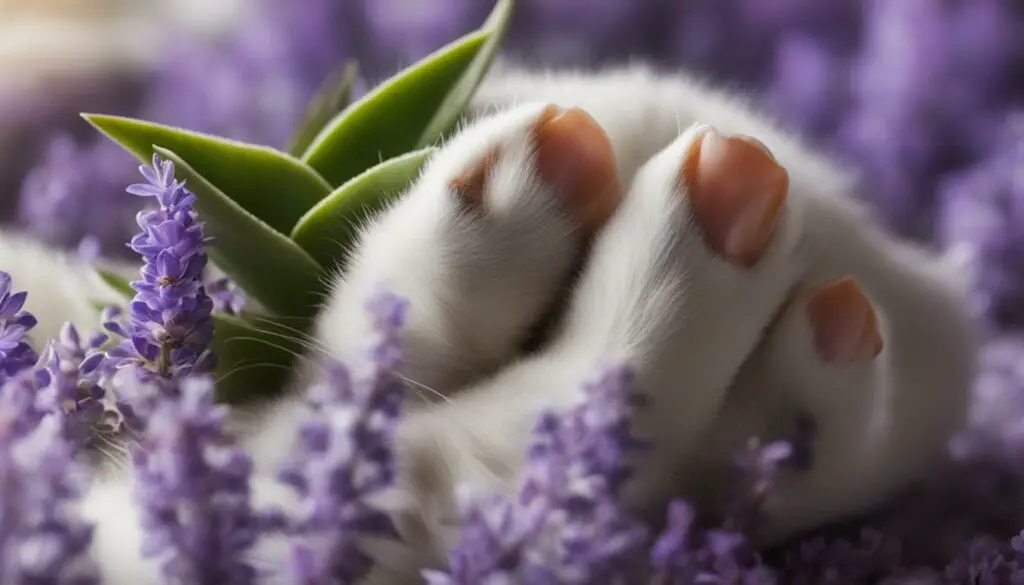
“Proper pain management ensures that your cat can heal without unnecessary discomfort.”
Consulting with a veterinarian is crucial to determine the appropriate pain management strategies for your cat. They may prescribe pain medication or provide injections to alleviate your cat’s pain. These medications can help reduce inflammation, control pain, and promote a faster healing process.
Monitoring and Adjusting Pain Management
It’s essential to closely monitor your cat’s response to pain management and make any necessary adjustments. Observe your cat’s behavior and note any changes in appetite, activity levels, or signs of discomfort. If you notice any concerns, contact your veterinarian to discuss potential modifications to the pain management plan.
“Proper pain management is crucial for your cat’s overall healing and well-being.”
Remember, every cat is different, and their pain management needs may vary. Working closely with your veterinarian ensures that your cat receives the individualized care they need to recover and regain their normal activities.
Cleaning and Monitoring the Wound
After providing first aid for a torn cat claw, it’s crucial to keep the wound clean and closely monitor it for any signs of infection. Regularly cleaning the wound will help prevent contamination and promote proper healing. Here are some essential steps for cleaning and monitoring your cat’s claw wound:
- Gently cleanse the wound: Use a mild antiseptic solution recommended by your veterinarian to cleanse the wound. Avoid using harsh substances, such as hydrogen peroxide, as they can damage the delicate tissue.
- Keep the wound dry: Moisture can promote bacterial growth and hinder the healing process. After cleaning the wound, ensure it is thoroughly dried. You can gently pat the area with a clean, dry cloth.
- Apply antibiotic ointment or powder: After cleaning and drying the wound, apply a thin layer of antibiotic ointment or powder recommended by your veterinarian. This will help prevent infection and promote healing.
- Change the bandage regularly: If your cat’s wound requires a bandage, it’s important to change it regularly to maintain cleanliness. Follow your veterinarian’s instructions on how often to change the bandage and how to properly secure it.
It’s crucial to closely monitor the wound for any signs of infection. If you notice any redness, swelling, discharge, or if your cat displays continued pain or discomfort, it’s important to seek veterinary advice promptly. Your veterinarian may prescribe antibiotics or recommend additional treatments to address the infection and ensure proper healing.
Remember, proper wound care is essential for your cat’s recovery. By diligently cleaning the wound, applying necessary medication, and monitoring for any signs of infection, you can help ensure that your cat heals properly and minimize the risk of complications.
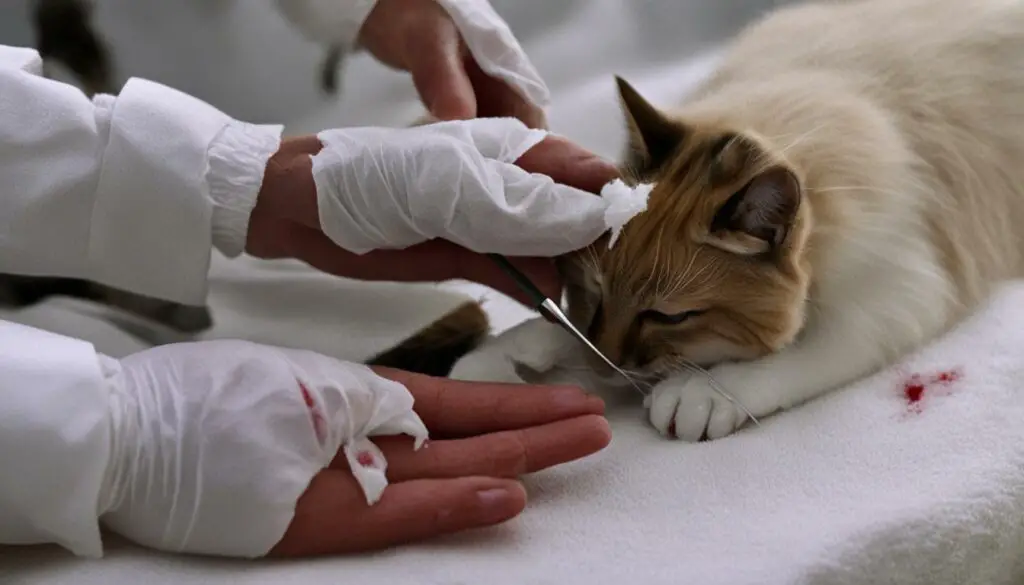
Table: Signs of Infection in a Cat’s Claw Wound
| Signs of Infection | Description |
|---|---|
| Redness and swelling | Increased redness and swelling around the wound site. |
| Discharge | Yellow or green discharge coming from the wound. |
| Continued pain | Your cat displays signs of discomfort or pain even after providing first aid. |
| Foul odor | An unpleasant smell coming from the wound. |
Consequences of Ignoring Claw Injuries
Ignoring a cat’s claw injury can have significant consequences for their health and well-being. If left untreated, a torn cat claw can lead to various complications that may require more invasive treatments. It’s essential to address these injuries promptly and provide the necessary care to prevent further harm.
One of the potential consequences of ignoring a claw injury is the development of infections. The open wound and exposed nail bed create an ideal environment for bacteria to thrive, leading to painful and potentially life-threatening infections. These infections can spread to the surrounding tissues and even the bones, causing severe complications and requiring extensive medical intervention.
Another possible complication is the formation of abscesses. If bacteria enter the wound and multiply, they can cause the formation of pus-filled pockets known as abscesses. These can be extremely painful for the cat and may require drainage and antibiotic treatment to resolve. Neglecting to treat a claw injury increases the risk of abscess formation and prolongs the cat’s suffering.
If not addressed promptly, a cat’s claw injury can result in long-term damage and even permanent deformities. Crooked nail growth, ingrown nails, and chronic pain are all potential outcomes of untreated claw injuries. These complications can significantly affect the cat’s quality of life and may require ongoing management or corrective procedures.
By recognizing the importance of timely intervention and seeking appropriate veterinary care, cat owners can prevent these consequences and ensure their feline companions recover fully. Prompt treatment, proper wound care, and diligent monitoring are key to minimizing the risks associated with claw injuries and promoting successful healing.
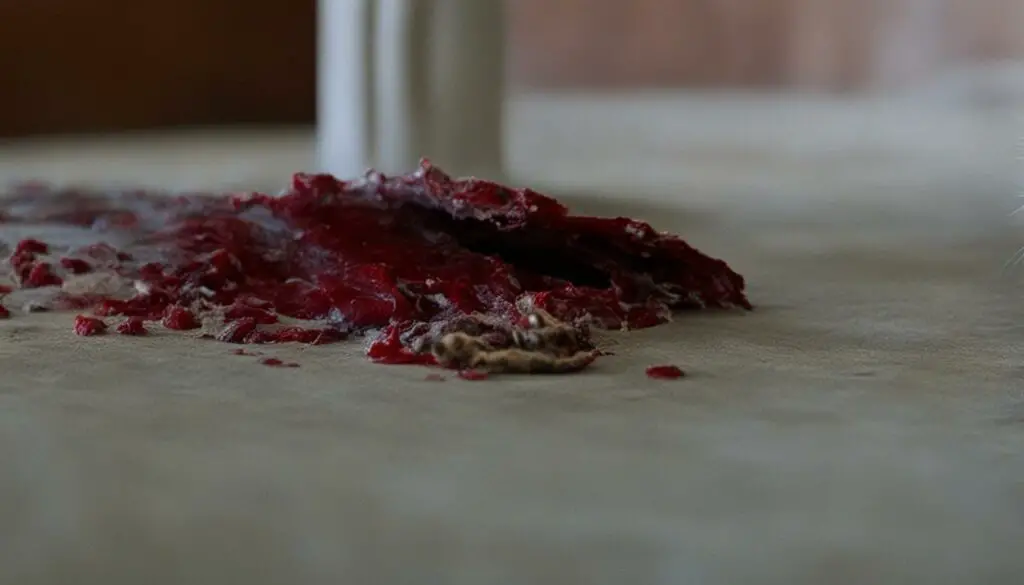
Tips for Preventing Claw Injuries
If you’re a cat owner, you know how important it is to keep your feline friend happy and healthy. One area of focus should be preventing claw injuries, which can be painful and lead to complications. Here are some tips to help you prevent claw injuries and ensure your cat’s overall well-being.
Regularly Trim Your Cat’s Nails
One of the most effective ways to prevent claw injuries is to regularly trim your cat’s nails. Long nails are more likely to get caught in carpet, furniture, or other surfaces, increasing the risk of tears or rips. Invest in a good pair of cat nail clippers and make nail trimming a part of your cat’s grooming routine. If you’re unsure how to trim your cat’s nails, consult with a veterinarian or a professional groomer for guidance.
Provide Appropriate Scratching Surfaces
Cats naturally have the urge to scratch, and providing them with appropriate scratching surfaces can help prevent claw injuries. Invest in a sturdy scratching post or a horizontal scratcher that suits your cat’s preferences. Place the scratching surface in an easily accessible area and encourage your cat to use it by using treats or catnip. By redirecting your cat’s scratching behavior to appropriate surfaces, you can minimize the chances of them scratching furniture or other surfaces with potential hazards.
Keep Your Cat’s Environment Safe
Creating a safe environment for your cat is essential in preventing claw injuries. Remove any potential hazards that can cause your cat to get their claws caught, such as loose or frayed carpets, strings, or wires. Secure any furniture or objects that can tip over and potentially harm your cat. By ensuring a safe environment, you reduce the risk of accidents and injuries that can affect your cat’s claws.
| Tips for Preventing Claw Injuries |
|---|
| Regularly trim your cat’s nails |
| Provide appropriate scratching surfaces |
| Keep your cat’s environment safe |
By following these tips, you can minimize the risk of claw injuries and keep your cat’s claws healthy. Remember, prevention is key when it comes to your cat’s well-being. By taking proactive measures, you can provide a safe and comfortable environment for your feline companion.
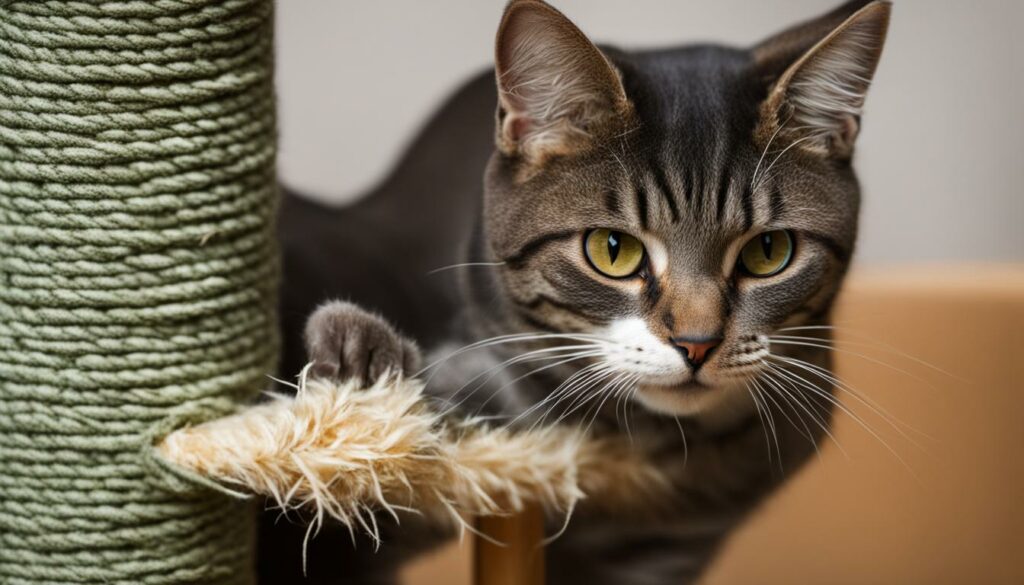
Potential Complications of Claw Injuries
Dealing with a claw injury in your cat can lead to potential complications that require attention. It’s important to be aware of these complications and take appropriate measures to ensure your cat’s well-being and proper healing.
One common complication of a claw injury is the development of an ingrown nail. If the injured claw grows back improperly, it can curve and grow into the surrounding skin, leading to pain, inflammation, and potential infection. Regularly inspecting your cat’s claws and seeking veterinary care if you notice any signs of an ingrown nail can help prevent further complications.
Infections are another concern when it comes to claw injuries. An open wound from a torn claw provides a potential entry point for bacteria, increasing the risk of infection. If you notice signs of infection such as redness, swelling, discharge, or continued pain, it’s essential to consult a veterinarian for proper diagnosis and treatment. Prompt intervention can prevent the spread of infection and promote healing.
In some cases, a claw injury can cause the affected nail to grow back crooked. This can lead to discomfort and potential difficulty in walking or using the litter box. If you notice any abnormal nail growth or your cat exhibits signs of discomfort, it’s important to consult a veterinarian for appropriate assessment and possible correction.
| Complications of Claw Injuries | Symptoms | Action |
|---|---|---|
| Ingrown nails | Pain, inflammation, curving of the nail into the skin | Regularly inspect nails, seek veterinary care if ingrown nail is suspected |
| Infections | Redness, swelling, discharge, continued pain | Consult a veterinarian for diagnosis and treatment |
| Crooked nail growth | Abnormal nail growth, discomfort | Consult a veterinarian for assessment and possible correction |
By being aware of these potential complications and taking proactive steps to prevent and address them, you can ensure your cat’s recovery from a claw injury is as smooth as possible. Regularly monitoring your cat’s claws, providing appropriate care, and seeking veterinary advice when necessary are essential in promoting your feline friend’s well-being.
When to Seek Veterinary Advice
If you are unsure about the severity of your cat’s claw injury or if you notice any concerning signs, it is important to seek veterinary advice. A veterinarian can provide the necessary expertise and guidance to ensure your cat receives appropriate care and treatment. Here are some situations in which it is advisable to consult a veterinarian:
- If the bleeding from the claw injury does not stop or is excessive.
- If your cat exhibits signs of infection, such as redness, swelling, discharge, or continued pain.
- If your cat is unable to put weight on the injured paw or if there are signs of limping or significant discomfort.
- If you notice any abnormalities or unusual behavior during the healing process.
Remember, cats can be masters at hiding their pain, so it’s important to closely monitor their behavior and seek professional advice if you have any concerns.
By consulting a veterinarian, you can ensure that your cat receives an accurate diagnosis and appropriate treatment. They may need to perform further examinations, prescribe medication, or recommend additional care to promote healing and prevent complications. Your veterinarian will be able to guide you through the best course of action based on the specific needs and condition of your cat.
When it comes to your cat’s health, it’s always better to err on the side of caution. Seeking veterinary advice can provide you with peace of mind and ensure that your cat receives the care they need for a speedy recovery.
When to Seek Veterinary Advice Summary:
If you are unsure about the severity of the injury, if the bleeding doesn’t stop, or if you notice signs of infection or significant pain, it’s important to consult a veterinarian. They can provide the necessary expertise and guidance to ensure your cat receives appropriate care. Remember to closely monitor your cat’s behavior and seek professional advice if you have any concerns.
Conclusion
Dealing with a cat who has ripped out a claw can be a distressing experience, but by following the steps outlined in this article and seeking veterinary care when necessary, you can ensure proper treatment and promote your cat’s healing. Remember to take preventive measures to minimize the chances of future claw injuries and maintain your feline friend’s well-being.
When a cat experiences a claw injury, it’s important to understand the causes and potential complications that can arise. Whether it’s a torn claw or a more severe injury, providing first aid at home can help alleviate pain and prevent infection. However, it’s crucial to seek professional veterinary care in certain situations, such as severe injuries or signs of infection.
Preventing future claw injuries is key to keeping your cat safe and healthy. Regularly trimming your cat’s nails, providing appropriate scratching surfaces, and creating a safe environment can minimize the risk of further injuries. And always remember to stay vigilant and monitor your cat’s claws for any signs of infection or complications, as early intervention is vital for proper healing.
In conclusion, by taking proactive steps to care for your cat’s claws, promptly addressing injuries, and seeking professional help when needed, you can ensure your feline companion’s well-being and minimize the chances of cat claw problems in the future.
FAQ
What are the causes of claw injuries in cats?
Claw injuries in cats can occur when their claws get caught in carpet or furniture, during jumps or falls, or from other accidents.
How can I provide immediate first aid for a torn cat claw?
Safely restrain your cat, control bleeding by applying pressure, remove the damaged part of the nail, and protect the nail bed from infection.
When should I seek veterinary care for a torn cat claw?
It’s best to seek veterinary care if the injury is severe, the nail is not easily removable, or there are signs of infection.
How can I prevent future claw injuries in my cat?
Regularly trim your cat’s nails, provide appropriate scratching surfaces, and keep their environment safe and hazard-free.
What are the signs of an infected cat claw?
Signs of an infected cat claw include redness, swelling, discharge, or continued pain. If you suspect an infection, consult a veterinarian.
How should I stop the bleeding and clean a torn cat claw?
You can wrap the foot, use a styptic pencil, or apply baking powder or flour to stop the bleeding. Clean the wound with gentle antiseptic solutions.
How can I manage my cat’s pain after a torn claw?
Your veterinarian may prescribe pain medication or provide injections to keep your cat comfortable during the healing process.
How should I clean and monitor the wound after a torn cat claw?
Regularly bathe the paw, apply antibiotic ointment or powder, and change the bandage to prevent infection and promote healing.
What are the consequences of ignoring a cat’s claw injury?
Ignoring a cat’s claw injury can lead to infections, abscesses, or even bone infections, which may require more invasive treatments.
What can I do to prevent cat claw injuries?
Trim your cat’s nails regularly, provide appropriate scratching surfaces, and create a safe environment to minimize the risk of claw injuries.
What are the potential complications of claw injuries in cats?
Complications of claw injuries can include ingrown nails, infections, or crooked nail growth. Early intervention is important to prevent further complications.
When should I seek veterinary advice for a cat claw injury?
If you’re unsure about the severity of the injury, if the bleeding doesn’t stop, or if you notice signs of infection or significant pain, consult a veterinarian.
How can I help my cat heal after ripping out a claw?
By following the steps provided in this article and seeking veterinary care when necessary, you can ensure proper treatment and promote your cat’s healing.
Source Links
- https://animals.mom.com/cat-torn-out-claw-treatment-3476173.html
- https://vcahospitals.com/know-your-pet/first-aid-for-broken-nails
- https://www.petful.com/pet-health/how-to-treat-a-torn-cat-nail/

